-
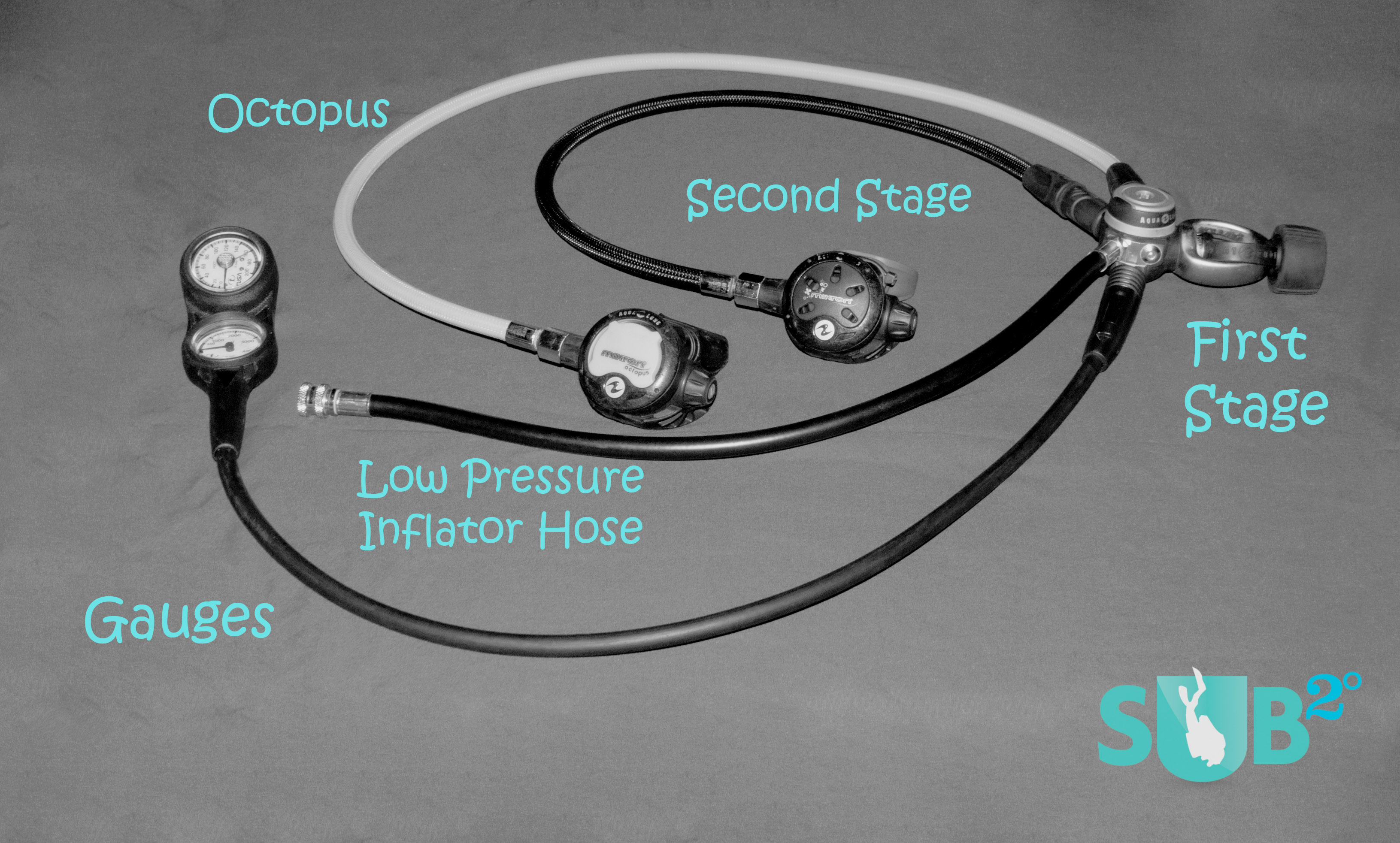
Regulator
An example of a regulator system with a first stage, two second stages (primary and secondary), a low pressure inflator hose, and gauges. -
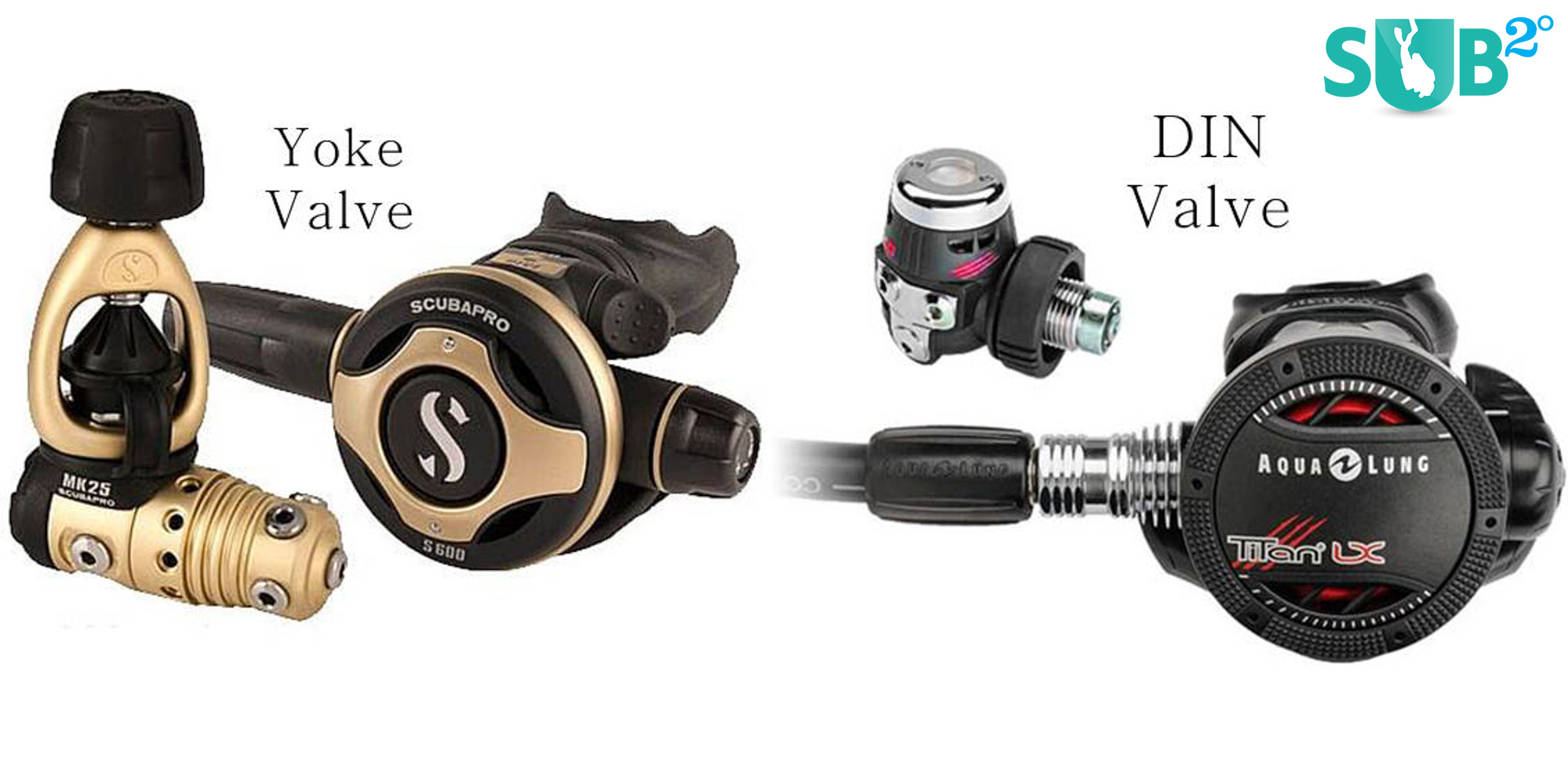
Yoke Valve vs. DIN Valve
A Yoke Valve tightens on to a tank valve and a DIN valve screws into the tank. Tank valves are specific for one type or the other. Product photos from www.leisurepro.com.
Understanding Regulators Part 1
Often just called a regulator, the equipment that delivers a diver’s air is made up of several parts. The first stage is the piece that attaches to the tank and from the first stage most systems include two second stages (a primary and a secondary regulator which we breath from), a low pressure inflator hose that connects to and delivers air to the BCD, and a gauge system or transmitter that shows tank pressure.
What Do Regulators Really Do?
We know a regulator gets the air from our tank to us, but there is a bit more to it. The air in our scuba tanks is compressed and at high-pressure that we cannot breathe directly. At the first stage, air is reduced to an intermediate pressure; the regulator reduces this pressure to ambient pressure. The second stage reduces the pressure again to what a diver can breathe.
Regulators operate by demand systems, so as a diver inhales they open a valve that lets the air come out. Air will also be released by using the purge button on the front of the second stage, which trips the demand valve. If a regulator ever was to malfunction, they are designed to fail-safe in an open position and the regulator will free-flow. This is why breathing off a free-flowing regulator is practiced in open water classes. It is possible to breathe off a free-flowing regulator and a diver will then make a safe, slow ascent to the surface because the air is depleting from the tank very quickly.
What’s the Difference Between Regulators?
There are many different styles and features available on regulators and new technologies come out every day. The first place to start is a reputable dive center. Knowledgeable staff will be able to show you different types and some shops might even be able to let you try out different regulators in a pool.
Many different features are available and costs can vary, but pretty much any regulator on the market will be fine for recreational diving in warm waters up to 130ft. In my opinion, if you are buying from a scuba equipment dealer and a regulator made by a known brand, you can rest easy that it’s a good regulator. Dive gear is tested and re-tested constantly before ending up on a shelf, so you know it’s going to keep you safe as long as it’s used correctly and taken care of. Used gear can be just fine to purchase but it's important to have it inspected and serviced if you don't know what sort of use it's had prior.
Here are some of the major differences:
Yoke Vs. DIN
First stages come in two configurations: DIN or Yoke. A DIN fitting screws directly into the tank making them the safest fit on a tank. In the past they were limited to only the European market, but they are gaining popularity, especially in technical diving. They also take pressure up to 200-300bar (3000-4000psi) where Yoke fittings can only handle pressure up to 232bar (3500psi). Yoke fittings are by far the most popular worldwide and screw over the tank. There are converters for both so either can be used on either tank with an adaptor.
Diaphragm vs. Piston
In the first stage, these two systems convert tank pressure to intermediate pressure. Piston systems tend to be less expensive and have a fairly simple design and high performance. Diaphragm systems are more complex with more moving parts and slightly lower performance. Diaphragm systems can be environmentally sealed which allows them to work in cold or dirty environments (more on special diving conditions later).
Balanced vs. Unbalanced
An unbalanced system is affected by pressure from depth and tank pressure so they will take slightly more effort to breathe from at deeper depths and as the tank becomes emptier. Balanced first stages are more expensive but there will be no noticeable difference in performance at depth or tank pressure. There are also overbalanced systems that increase airflow as depth increases. These are great, although they are very sensitive; sometimes there is more of a potential for free flowing - mostly when jumping in the water, etc.
Regulators for Special Diving Conditions
To dive in harsh environments such as near freezing water or water that has lots of particles a regulator needs to be environmentally sealed. These systems protect the internal hardware from interacting with the water, reduce the likelihood of freezing up and prevent particles from getting into the system and causing damage.
Stay tuned for part 2 discussing second stages, special features, and how to care for your regulator.
Featured Posts
-
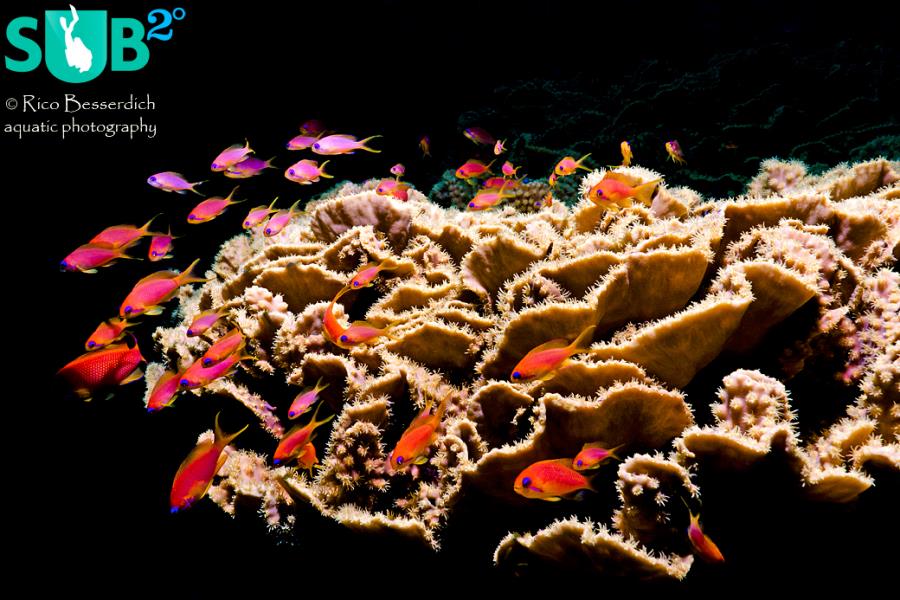
Please "Like" My Photo!
Once you've made some cool underwater shots, you would love to have more people notice your photos, for example by sharing them on Facebook. A path full of potential but lots of nasty obstacles on the way. Let's have a look!
-
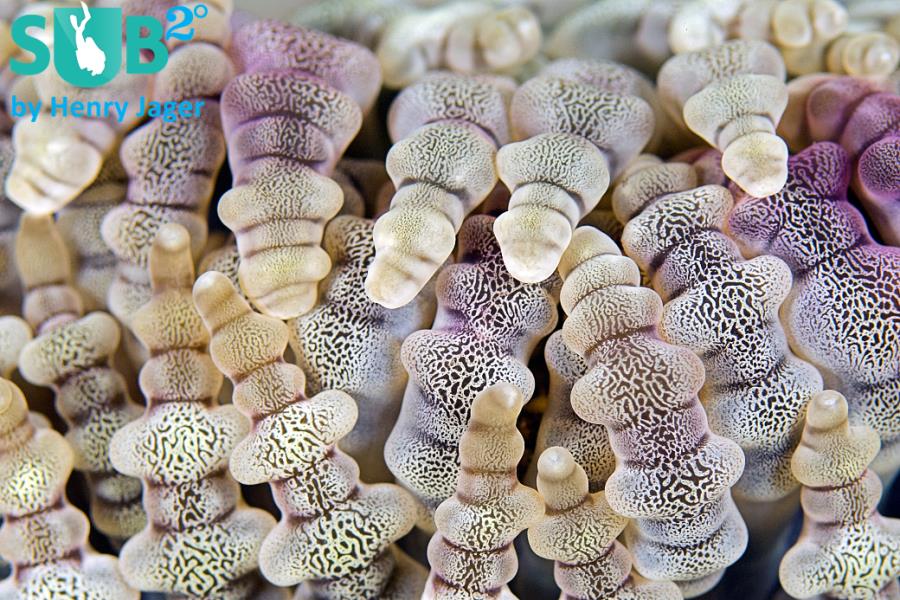
Reef-Art: Looking at the Reef...
Reef-Art shows fascinating insights to an underwater world, 99% of the divers never see. Reef-Art is the "Fine Art" of macro photography. It's a passion! The passion to bring your audience something they don't expect, they h...
-
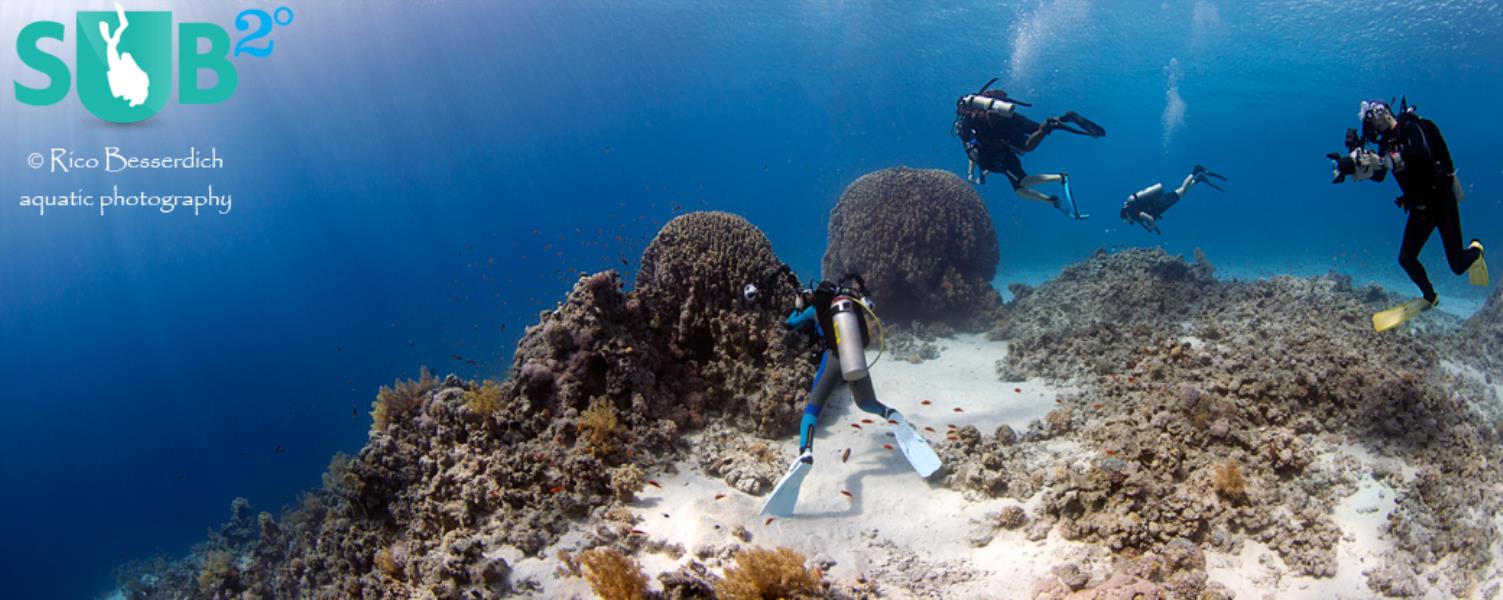
Underwater Photography: Shoot...
Are you ready for huge perspectives in your underwater photographs? Wide-angles are fine but do you want it even wider? Time to check out underwater panorama photography!


Load more comments